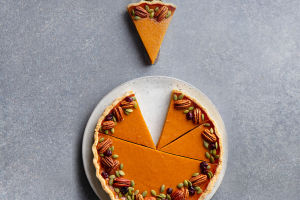Puff pastry, a delightful Western-style pastry, is renowned for its light, airy crust, and can be filled with a variety of delicious flavors, including cream, chocolate, and ice cream.
This dessert's roots are believed to originate from Italy, where its early form was first developed before it gained popularity in France.
To create puff pastry, a mixture of flour, salt, and butter is layered and repeatedly folded, resulting in its characteristic light and flaky texture. The dough is then meticulously rolled out to a thin sheet and cut into various shapes, such as rectangles, circles, or triangles, tailored to specific culinary creations. Puff pastry's versatility allows it to be a base for both sweet and savory dishes, depending on the chosen fillings.
The history of puff pastry stretches back to ancient times, with the Greeks and Romans thought to have made a precursor to this pastry. However, the modern iteration of puff pastry, as we know it today, is credited to French pastry chefs who refined the technique in the 18th century, elevating it to an art form in the world of gastronomy.
The puff pastry has become a cornerstone in Western-style desserts, renowned for its diverse applications. Commonly used as the base for tarts, pies, and various desserts, it can be creatively filled with an array of creams, fruits, and sweets. Beyond sweet treats, puff pastry is also adept in savory dishes like chicken pot pies, where it offers a light and flaky touch.
The global popularity of puff pastry is evident in its variations across different countries. In Spain, known as "hojaldre," it is often filled with almond cream or custard. Meanwhile, in Portugal, where it's called "massa folhada," it's used for both sweet pastries and savory items like empanadas.
While making puff pastry might initially appear challenging, it can be quite manageable with some practice. The secret to perfect puff pastry lies in the folding and layering technique, which creates its signature flaky and light texture. It's crucial to work swiftly and keep the dough cool to prevent the butter from melting, as this can result in a dense and heavy pastry.
In conclusion, puff pastry, with its origins in Italy, has become an integral part of Western-style cuisine. Its delightful and airy texture, along with its versatility in accommodating various fillings, both sweet and savory, has earned it global acclaim. With a bit of practice, anyone can master this exquisite pastry, delighting friends and family with their culinary creations.


